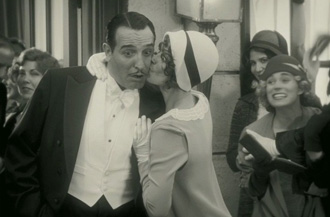|
|
BOP Interview: Michel HazanaviciusBy Ryan MazieNovember 25, 2011
How did you go about playing the music while filming? Did you play certain songs that would evoke an emotion? MH: Yeah, sure. I used a lot of classical Hollywood composers like Leonard Bernstein, Max Steiner, Bernard Herrmann, and there is actually a track of his in the movie – the Vertigo at the end. I played it for the emotional mood and for some sequences, something with a good rhythm. For example, the scene where George Valentin pulls down all of the white sheets off the furniture, I used the music of Sunset Boulevard with a lot of variation and strong acceleration that helped Jean to do it with a good tempo. And sometimes it was just decorative music like the Charleston and some jazz from that era just to trap the mood of the period. The Artist has been brought up in a lot of conversations about how movies are now CGI-heavy and all 3D. Was this movie made as a message in a way to combat this technological sophistication? MH: I didn’t make the movie against a kind of fear. I did it because I had a desire to make it and I had the hunch that it was a good movie to make. There are a lot of movies with special effects that are very good at it. I was just talking about Rise of the Planet of the Apes. There are a lot of strong visual effects, but the movie is really, really good because the story is good and it's amazing. When the ape says “No!” it is really strong. Once I heard someone say, “When the new technology arrives, at first the directors use it as toys. Then they use it as tools. And that’s a big difference.”
|

|
|
|

|
Friday, November 1, 2024
© 2024 Box Office Prophets, a division of One Of Us, Inc.


